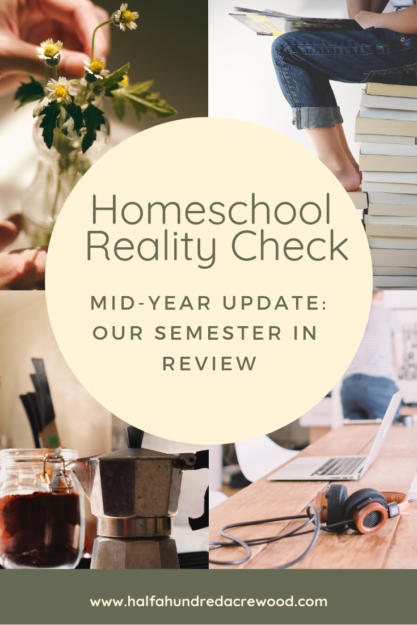
Have you ever wondered how things really turn out in other family’s homeschools? Does it really look like the utopian pictures on the front of the A Beka catalog? Perhaps it does in others’ homes, but… not us. The more I learn to accept that it won’t ever look like that in our home, the more at peace I feel. (And the less inclined I am to succumb to feelings of insanity.)
Every semester we examine how our plans actually unfolded and make adjustments to the following semester accordingly. Here I’d like to share what really happened last semester because… although I try to piece together an ideal plan, this truth remains:
Many are the plans in a person’s heart, but it is the LORD’s purpose that prevails. Proverbs 19:21, NIV
Even so, planning remains paramount to a successful school year. Without a plan, we don’t have vision or direction or goals. So… I plan and then pray that God will
Teach us to number our days, that we may gain a heart of wisdom. Psalm 90:12, NIV
Part of numbering our days aright is planning well. Part of numbering our days aright is letting go of those plans when God has something else in store for our family…
Because we felt the need to immerse ourselves in worship, missions, and discovery of God’s world, we embarked on a study of world cultures and world religions primarily through stories of those who have accepted God’s call to share His love and Truth among the nations of the world. Thus far, this missions-focused study has made this year the most rewarding of all our years homeschooling. It has had a deep and profound impact on all of us.
Note: This post was written in Fall of 2108. Since then, we’ve graduated two of these boys from high school. Time is so short and precious. I will never regret the memories we made when we experienced Mission World Wonders for the first time together as a family!
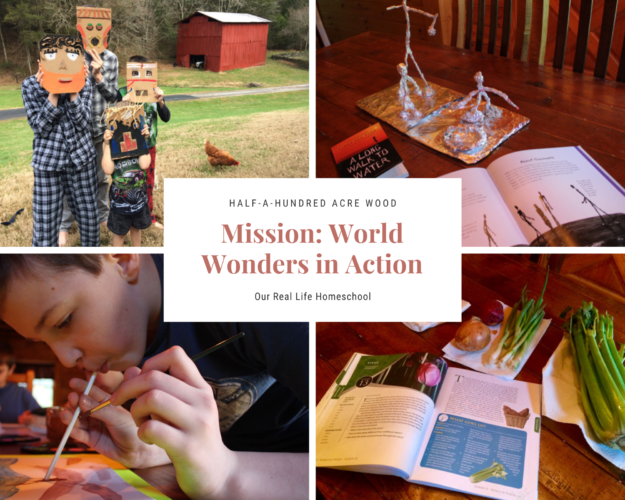
Morning Time through Mission: World Wonders
Our morning time consisted of geography, hymn study, science, history, composer study, and art projects. Not every morning included all of these subjects (of course) but they were scheduled/paced out in a simple format in the Mission: World Wonders Curriculum Plan. Morning time took us about 30-45 minutes to complete, unless an art project or science experiment was scheduled. We didn’t always complete those art/science activities according to schedule, but we enjoyed all of the art projects and most of the science experiments and nature study. I’ll highlight more about those activities at the bottom of this page!
Family Read Alouds
I’ll start with our read alouds and independent reading because… reading is one of our favorite parts of our homeschool day! We usually read our family read-alouds in the evenings, but sometimes we’ll also listen to an audiobook on a roadtrip (which is how we finished Story of the World Volume 1 this semester). The read-alouds we enjoyed as part of our first semester of Mission: World Wonders included:
A Long Walk to Water. Set in the midst of the Sudanese conflict, this story follows the lives of Nya and Salva, two children whose lives eventually intersect in an amazingly profound way.
Lillian Trasher: The Greatest Wonder in Egypt. Founder of Egypt’s first orphanage, Lillian Trasher embarked on a life of service as “Mother of the Nile” as she cared for children in the midst of poverty, war, and disease.
Mary Slessor: Forward into Calabar. Mary Slessor answered God’s call to minister to the unreached, dangerous tribes of Western Africa, breaking the stronghold of superstition through God’s love.
Charles Mulli: We Are Family. Abandoned as a child, Charles Mulli rose to great wealth as an entrepreneur in Kenya but later sold his company to found Mully Children’s Family, a charitable organization to provide homes for the street-children of Kenya. Beautiful story!
Samuel Zwemer: The Burden of Arabia. Founder of the Arabian Mission in Bahrain, Samuel Zwemer dedicated himself to sharing the Gospel with the Muslim world.
Sundar Singh: Footprints over the Mountains. Formerly a Sikh, Sundar Singh became a Christian sadhu and traveled across the Himalayas to share the gospel with Hindus, Buddhists, and Sikhs in the remote villages of India and Tibet. As he preached in Asia and later in Europe and America, his bold words and actions impacted the world. Powerful thoughts and a very different – and valuable – perspective!
Story of the World Volume 1. This was our history selection to expose us to the stories from ancient cultures around the world.
In addition to these books, we also read aloud…
Tales Of Persia: Missionary Stories From Islamic Iran. This wonderfully engaging and encouraging book of missionary tales teaches readers about Islam and includes scripture readings that tie into each biographical story. Great read aloud for young and old alike! (We’re still finishing up a few of the stories in this book.)
Ida Scudder: Healing Bodies, Touching Hearts. Originally refusing to ever become a missionary doctor, Ida Scudder submitted to God’s call to medicine after she witnessed the death of Indian women because of their religious beliefs. Although it’s scheduled for second semester of Mission: World Wonders, we ended up listening to this biography (via a free Audible trial) over Christmas break. So good!
The Chronicles of Narnia: The Lion, the Witch, and the Wardrobe, The Magician’s Nephew, The Horse and His Boy, and Prince Caspian. We read The Chronicles of Narnia about six years ago and felt it was time to revisit them as a family. We plan to work the other three books into our schedule this semester.
A Glimpse of Our Experience with Mission World Wonders
As part of our Mission: World Wonders plan, we enjoyed…
- Experimenting with fruits and vegetables as we studied plants
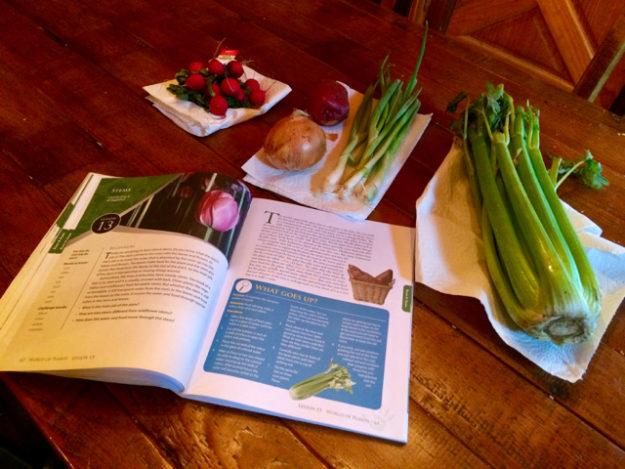
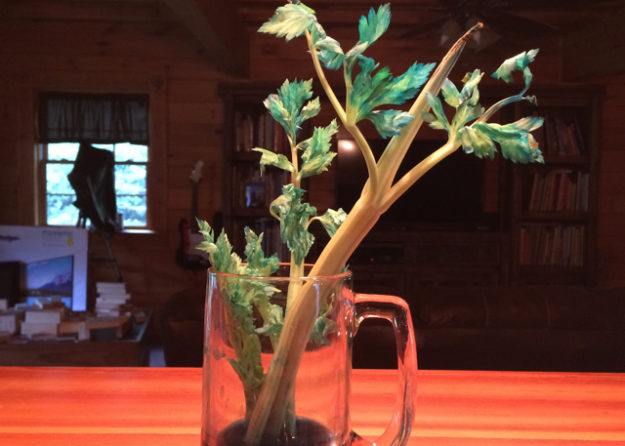
- Learning the difference between monocots and dicots
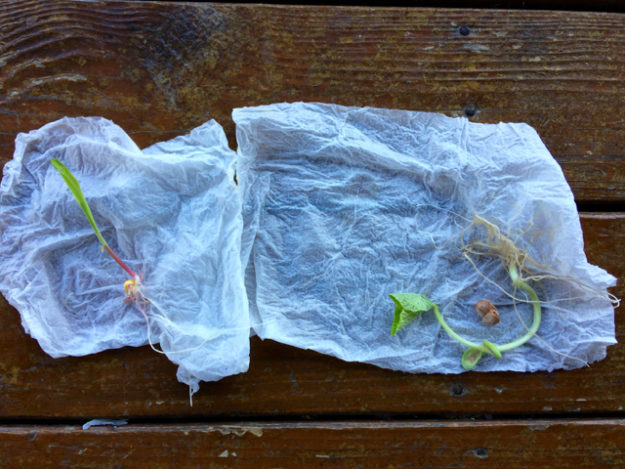
- Learning the necessary and optimal conditions for growing a plant
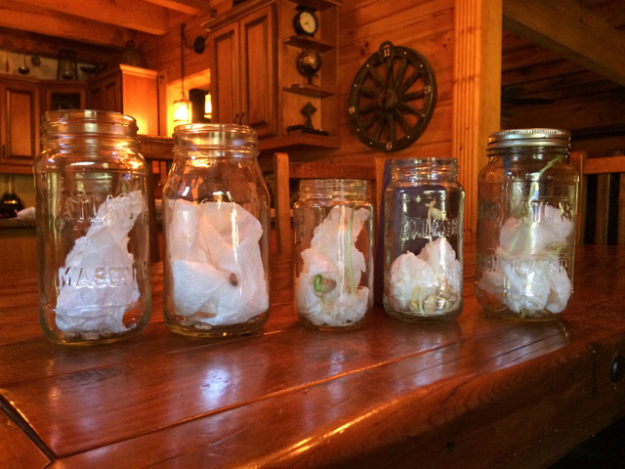
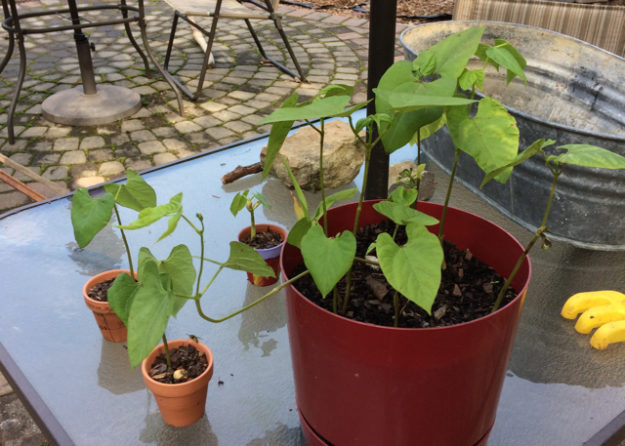
- Examining plants and animals in greater detail on nature walks
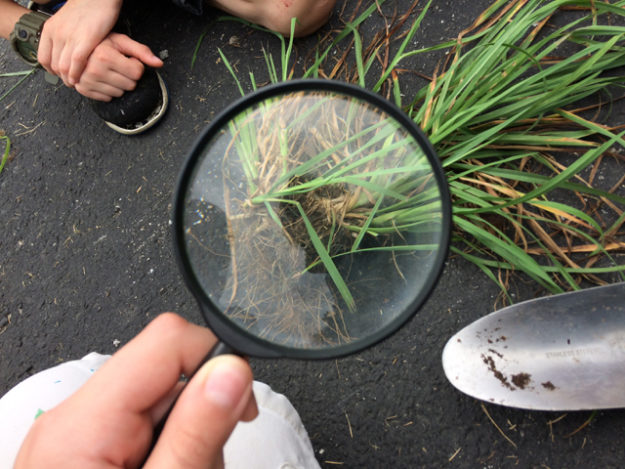
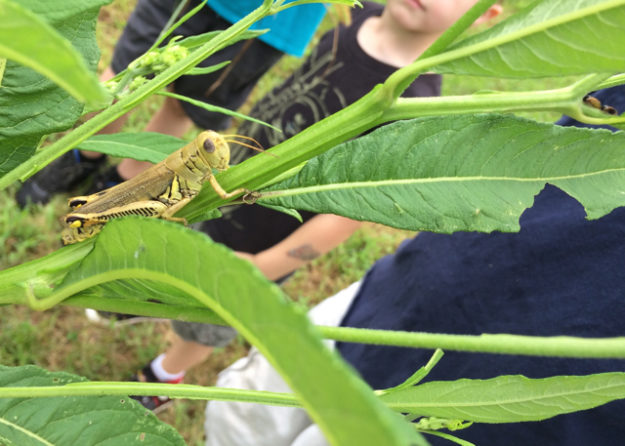
- Completing art projects that correlated with each of our missionary read-alouds and geography studies:
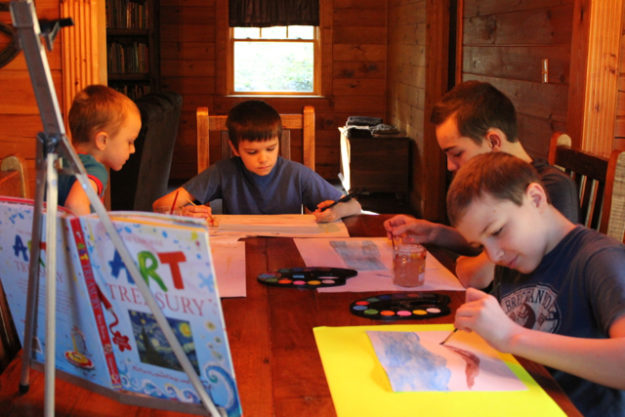
Giacometti’s Foil Figures and A Long Walk to Water:
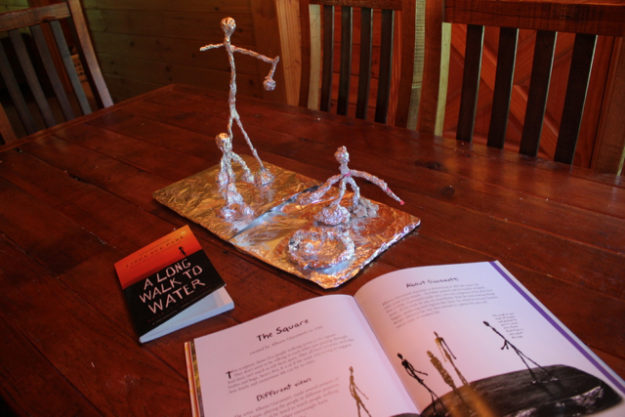
“Mud” hand prints representing Hands of Service:
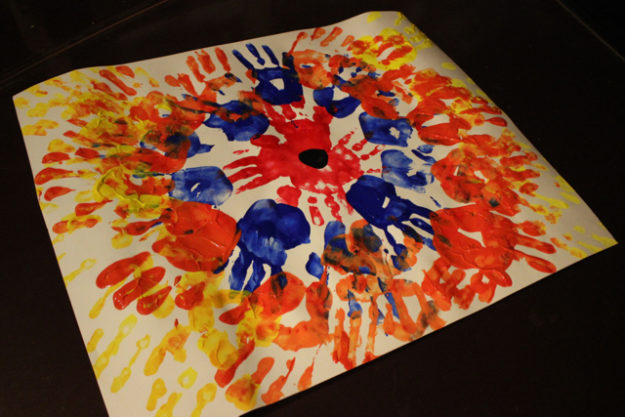
African masks (photo-bombed by a chicken):
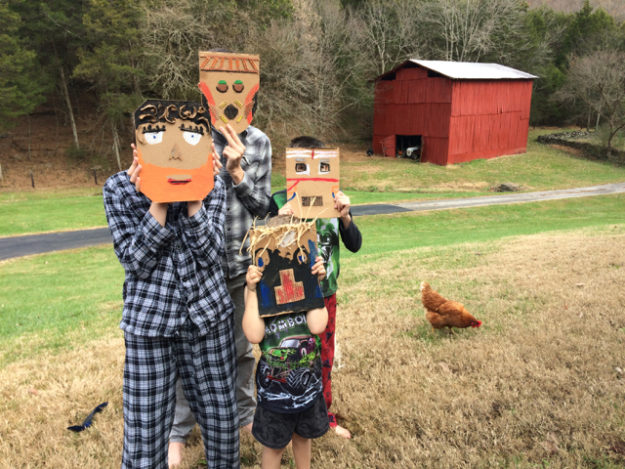
Concentric Africas in the style of Kandinsky:
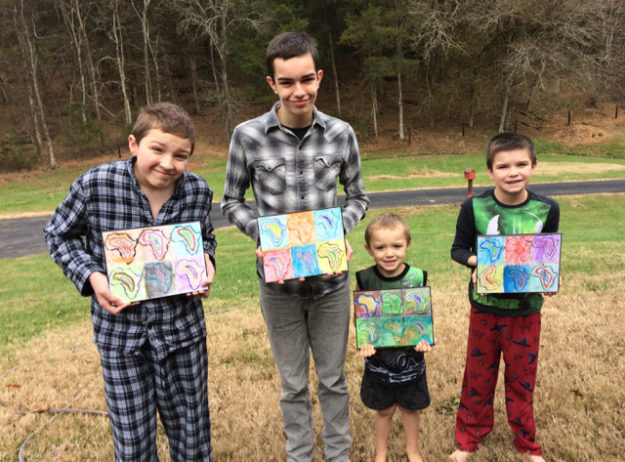
Arabian Tiles for our study of the Middle East:
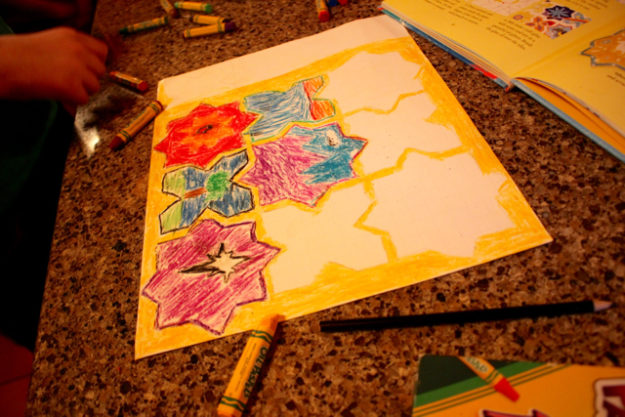
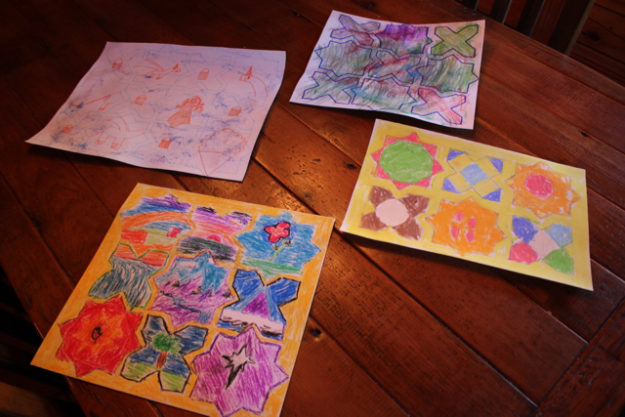
And… our favorite thus far: straw-blown winter trees with Sundar Singh’s footprints in the Himalayan snow
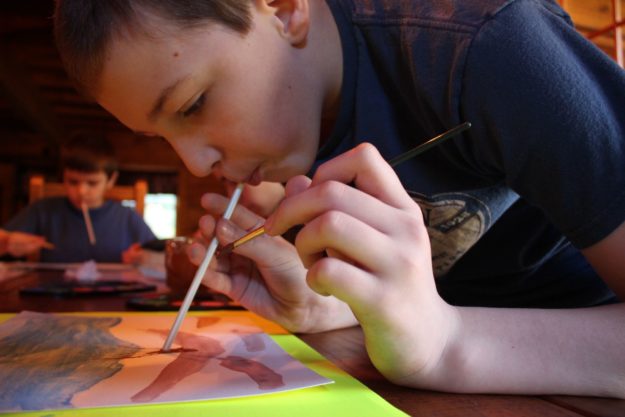
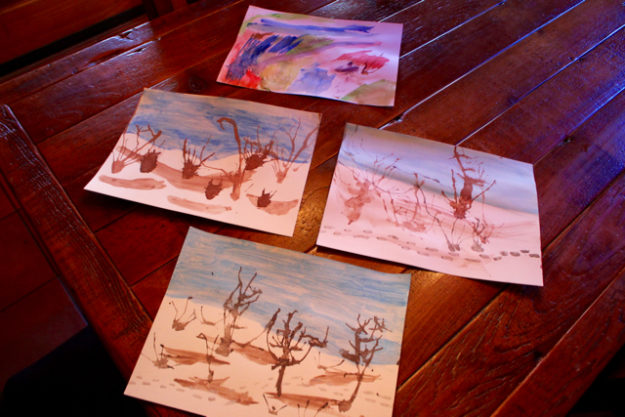
- Memorizing Africa’s countries and physical features
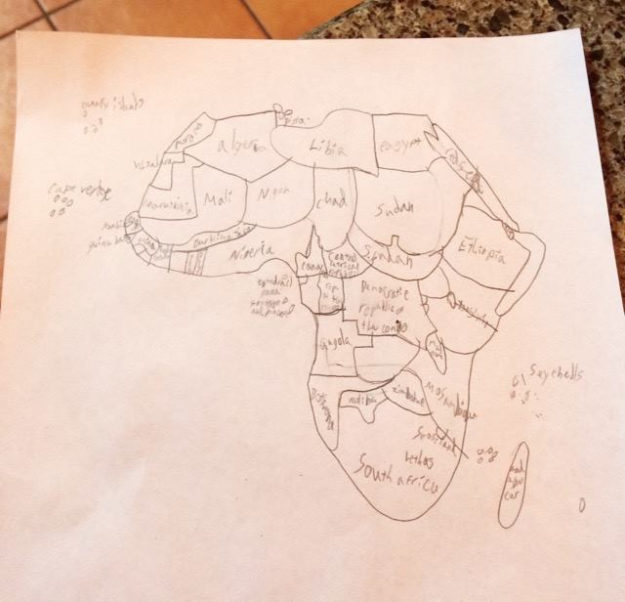
Above: A photo of our 7th grader’s Africa by memory – from very early in the first semester. (It’s the only photo I ended up taking!) By the end of first semester he could draw and label both Africa and part of Asia (including the Middle East) by memory.
We ended up using our pin maps a bunch this year! We placed them in poster frames we bought from Wal Mart to help us to study and quiz countries and physical features daily. Our 4th grader has memorized all of Africa and the Middle East and part of Asia.
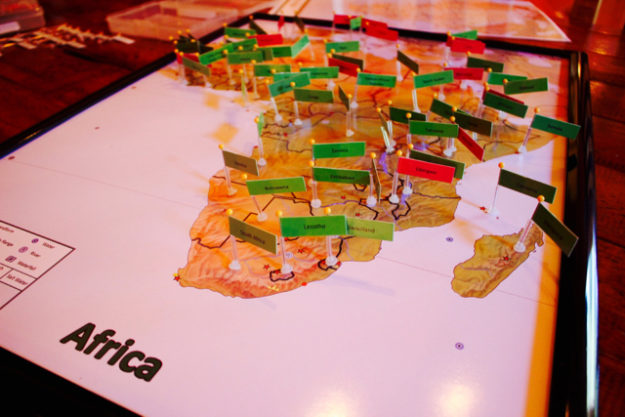
Our devotional time included readings and prayer prompts from Window on the World:
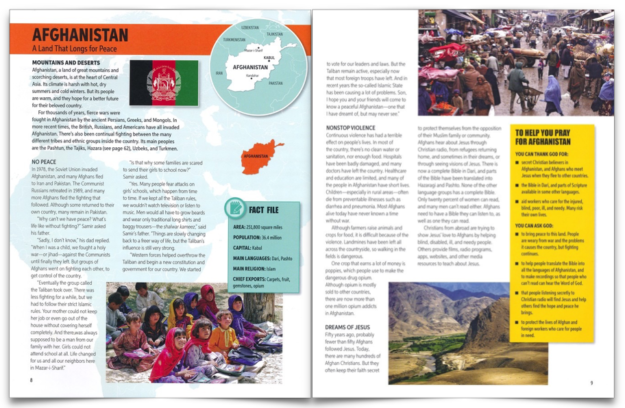
And that’s just a glimpse of what we’ve been studying in Mission: World Wonders, but the most important part has been the amazement and wonder we’ve shared together reading about how God has worked through creation and mankind to reveal Himself to us. It has been a wonderful journey – and we look forward to continuing that journey next semester! (If you have questions about this curriculum, feel free to contact us at support {at} halfahundredacrewood.com.)
Independent Reading
Our oldest boys read several other books independently…
Our 10th grader read literature selections matching up with Exploring World History and also read the entire Treasury of Sherlock Holmes, Charles Dickens’ A Christmas Carol (again), Hittite Warrior (again), and a whole bunch of other books that are stored under his bed right now. (I’ll come back and update this list a bit later when I have him clean up his room.)
Our 7th grader read David Livingstone: Africa’s Trailblazer, Rowland Bingham: Into Africa’s Interior, C.T. Studd: No Retreat, Carry On Mr. Bowditch (again), The Door in the Wall, Crispin: The Cross of Lead, The Golden Goblet, The Trojan War, The Secret Garden, and It Couldn’t Just Happen. Can this really be the same child who entirely despised reading 6 years ago?
Our 4th grader read Mary Pope Osborne’s Tales from the Odyssey Part 1 and Part 2 and several works of non-fiction, and he’s been studying in great detail Mini-Weapons of Mass Destruction and The Ultimate Survival Manual. (Who knows what that boy’s up to?)
Our 4-year-old is not yet reading but enjoyed many picture books over the course of last semester. If you’d like to know his favorites, jump down to the comments and let us know!
Memory Work
Our memory work this year has consisted primarily of geography (we’ve memorized all of Africa and most of Asia as part of Mission: World Wonders), math facts (still working on mastery), Latin vocabulary (from the Memoria Press Form Series), and Scripture. We thought we’d continue with history and science memory work, but it just hasn’t been as important to us this year. Learning in context through our science curriculum has proven an effective way for us to remember many of the facts that we used to memorize as science Q&A. (Same thing with history sentences.) We also thought we’d memorize some poetry, but that didn’t happen last semester. (We’re hoping to add poetry back in this coming semester.) The beautiful thing is that practicing and developing the skill of memorizing can be done with whatever is important to your family.
Spelling, Copywork/Penmanship, and Language Arts
This list includes what we used for language arts (in 2018) across a wide range of ages along with any mid-year changes we made.
- 4th and 7th Grader: For spelling, we’ve been using Spell to Write and Read, which I don’t necessarily recommend for new parents because it’s a somewhat difficult program to learn. In fact, it rested on my shelf for several months until I invested in SWR Training. If you’re looking for a simple and effective spelling program, you can check out All About Spelling.
- 4th grader
- Script-n-Scribe Truth Traveler. Poetry, art study, and the simple application of English grammar concepts.
- IEW Ancient History-Based Writing Lessons.
- Fix-It Grammar Level 1. I’ve noticed with my older children that they haven’t had enough structured practice with editing and checking mechanics. IEW’s Fix-It Grammar program includes short simple lessons that reinforce application of parts of speech, usage, punctuation, capitalization, and more. It’s our new favorite find for this year! Love, love, love!!
- Question confirmation on various Star Wars-related sentences, but for this coming semester, I’m thinking about pairing the question confirmation process up with the sentences studied in Fix-It Grammar.
- 7th Grader
- Lost Tools of Writing Level 1. We’ve been matching these up with the literature he’s been reading. He especially loved writing about The Secret Garden this year!
- 10th Grader
- Lost Tools of Writing Level 2. We started using LTW Level 2 last semester but have decided to do a mid-year switch because it doesn’t fit well with the literature he’s reading, and he needs to learn skills of literary analysis in addition to persuasive writing. We’re about to embark on using IEW’s Windows to the World: An Introduction to Literary Analysis and look forward to sharing a bit about the experience with you towards the end of the semester. Note: LTW Level 2 focuses primarily on a prosecution and defense of whether a character should be punished. (If all of the reading selections had been Shakepearean plays, I think LTW Level 2 might have been a more reasonable fit, but he’s using literature selections correlated to Notgrass Exploring World History.)
- For our 4-year-old, Script-n-Scribe Roller Coaster Writer (large-motor activities leading into fine motor writing skills as he shows signs of readiness) and All About Reading Level 1. You can read about why All About Reading is our favorite reading curriculum! Our 4-year-old recognizes his letters but is still not quite blending them together into words. His fine motor skills are not quite there yet for writing, so he spends a lot of time coloring and drawing to strengthen his hand grip.
Latin
Visual Latin has been our preferred Latin for middle school. (Read why here.) Our 10th grader has been working through the Memoria Press Form Series at an accelerated pace to solidify Latin grammar. Repeating Henle 1 three times (as recommended by the tutorial we were involved in) just didn’t work for him, and he never felt like he had a solid grasp on Latin. Now, it’s a different story! He’s enjoying Latin again, but I think it’s because he fully understands and masters concepts – and he’s learning a wider, more relevant range of vocabulary. [Students who complete the Memoria Press Form Series (First Form, Second Form, Third Form, and Fourth Form) can head straight into Henle Second Year Latin. The Form Series completely replaces Henle First Year Latin.]
Math
Our original plan was for our 10th grader to use Jacob’s Geometry from Master Books, but we decided to continue with Algebra II. He started with Life of Fred Advanced Algebra and is now using the Algebra II exams from Saxon Algebra II to see if he has any gaps. (This is mainly because he will be taking the ACT later this spring and wanted to review traditional math before doing so.)
Our 7th grader is using Principles of Mathematics from Master Books, and it’s wonderful! It includes business and personal financial math skills in addition to core pre-algebra skills. Seeing how he’s loathed math in previous years, this is a true victory!
Our 4th grader has been using Math Lessons for a Living Education from Master Books. It’s been fairly good – but I’m not settled that it’s the best choice for him. He’s struggling with some of the new concepts, so I’m finding other ways to explain some of those concepts. Not sure if this is a keeper yet or not.
Update about math: Before our eldest graduated from high school, we switched all of our boys to Math U See and it is now the program we use and recommend across the board.
High School
In addition to what’s mentioned above, our oldest son is also studying chemistry with Discovering Design with Chemistry (which has been a good fit for him!) and world history with Exploring World History by Notgrass, which incorporates Bible study. We’re having great success with both of these curriculum choices! (Update: These are both now part of our Truth Trek Two High School Lesson Plans.)
Middle School
For science, our 7th grader used IEW’s fused outline process (which he learned in IEW history-based writing lessons) to research various science topics. All other subjects have been correlated to our Mission: World Wonders curriculum, which brings us back to Mission: World Wonders.
Parting Thoughts
Without getting into our extracurricular activities (Alaska trip, Oklahoma trip, drama, puppet team, basketball, and service projects), this is, in a nutshell, how our semester turned out. As time goes on, I’m in a state of wonder at how much we read books together. All of the boys read their own book selections independently, and yet we still come together to read all of these books, too. Just a few years ago, we struggled to finish 7 books over the course of an entire year (our first time through The Chronicles of Narnia). The more we read together, the easier it becomes. Sharing stories has become a central part of our lives. We’re able to grow from tales and experiences of others throughout history in all parts of the world. What’s more, Scriptural truths are revealed in every book we read. I cannot even explain how much I treasure the deep conversations we have as a result of reading together.
If you look back on your semester, and all you can see is what you didn’t do, grab a pencil and a sheet of paper and start listing everything you did do. You might even brainstorm as a family as you look back on your semester. It’s hard to see all you did with your children if you don’t ever write it down. And while we can always improve our endeavors (and our character), we can also rest in the fact that there’s always more to learn. We’ll never master everything because God is infinite, so learning about God and His creation is infinite. We have a lifetime to “search out a matter” (Proverbs 25:2), and I’m blessed to have the opportunity to discover more about Him with those I love most.
This post was originally published in Fall 2018.
